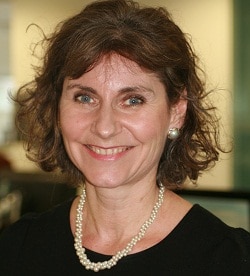Solicitors will not have to declare on their practicing certificates that they carried out professional training for the year 2015-16, the Solicitors Regulation Authority (SRA) has admitted.
Julie Brannan, director of education and training at the SRA, said this meant there would be a “missing year” but solicitors would still have to do their training.
Speaking at the SRA’s COLP and COFA conference in Birmingham last week, Ms Brannan said: “We’ve missed a year. You still have to do your training, but you don’t have to make a declaration for it.”
Under the current system for continuing professional development (CPD), solicitors tell the SRA when applying for their practising certificates that they have completed their training not for the past 12 months, but for the year before.
This means that this year they will make a declaration relating to the period October 2013 to October 2014. Next year, the declaration will relate to 2014-15.
However, the SRA has decided that solicitors in 2017 will make a training declaration relating to the past 12 months, and not the year before. So instead of covering the year 2015-16, it will relate to the year 2016-17.
A spokesman for SRA explained: “The previous regime, which involved solicitors completing a mandatory 16 hours of training, would involve a review period for the previous practising year, as it gave all solicitors the chance to complete their training.
“For example, those attending a course in the middle of October would not be failing to meet their obligations if it was for the following 12-month period.
“Now that we are moving to an annual declaration instead of a tick-box approach involving a set number of hours, the declaration can be made for the last 12 months rather than for training that could have been undertaken nearly two years ago.”
The spokesman went on: “The nature of the competence statement, however, does not mean solicitors are not required to ignore their responsibility under Principle 5 to ensure they provide a proper standard of service during 2015/16.
“We expect the profession to take this seriously and ensure they have the necessary skills to do their jobs properly.”
In a conference session on the new continuing competence regime, Ms Brannan said the old ’16-hour rule’ on CPD “probably played its part” in embedding a good approach to training, but was not a “magic bullet”.
She went on: “Doing the 16 hours did not mean you were competent. We want solicitors to think much more rigorously about what it means to be competent.
“It’s not for us to tell you what form your training should take. If it works for you, that’s fine. Some people like to learn by researching a point of law, others by listening to a 10-minute podcast on the bus. Training can be aligned to particular learning styles.”
Ms Brannan added that the appraisal cycle would be “very valuable” in helping firms show that they took training seriously.















A missing year, does this also mean we will all stay the same age for a year?